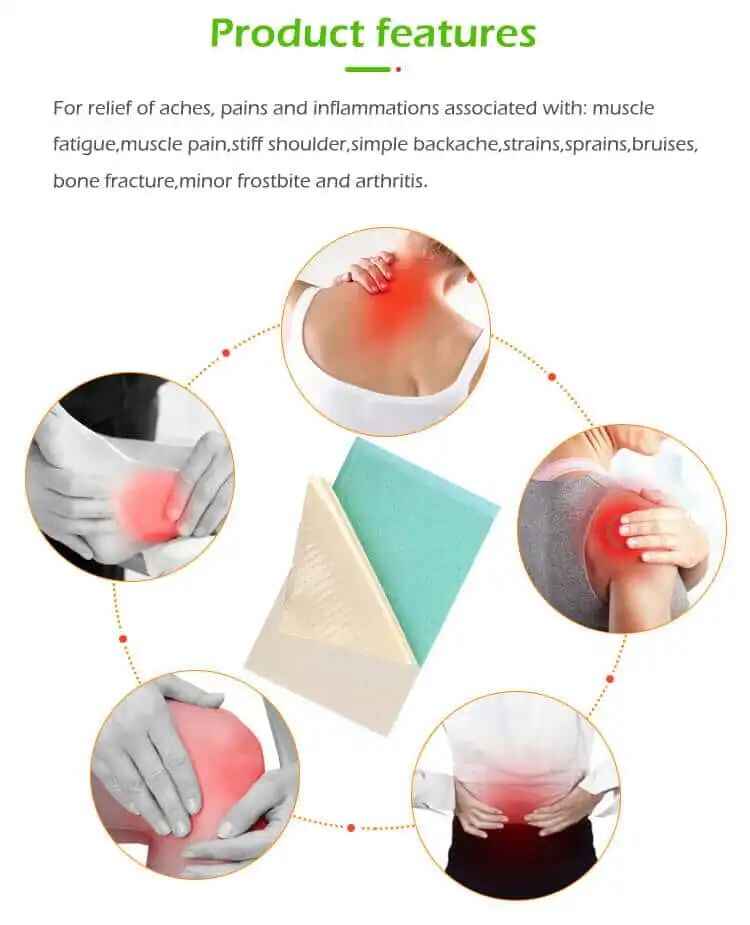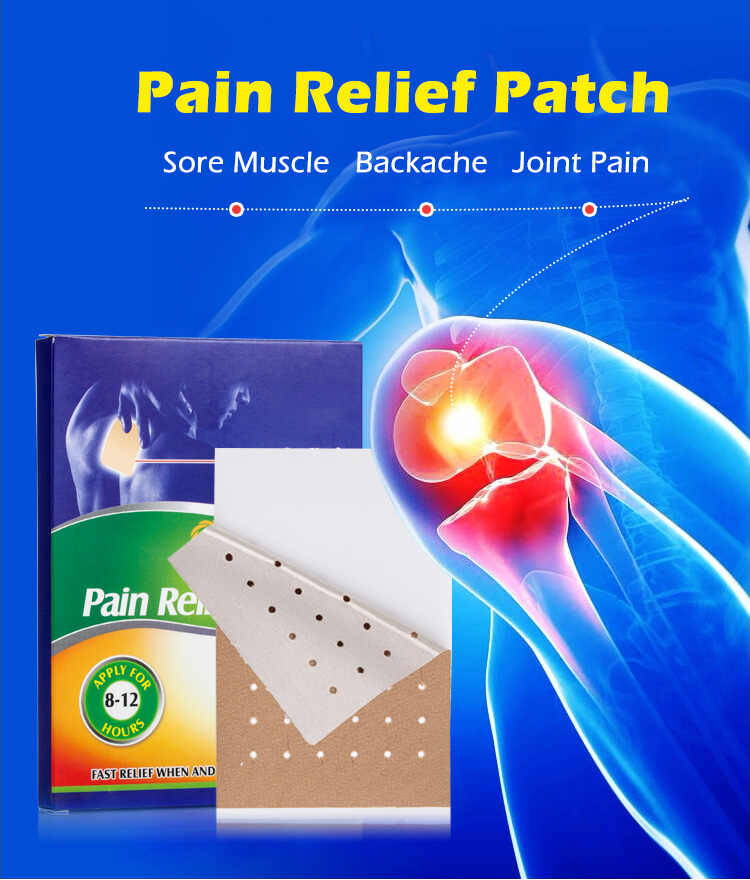What’s the Difference Between OEM and Private Label Pain Relief Gel Patches?
As the global wellness industry expands, transdermal pain relief solutions have carved out a significant niche. For businesses looking to enter this market, one key decision is choosing between OEM (Original Equipment Manufacturer) and Private Label Pain Relief Gel Patches. While both involve partnering with a Pain Relief Gel Patches Manufacturer or Pain Relief Gel Patches Supplier, the business models differ greatly in terms of customization, ownership, costs, and brand control.
This comprehensive guide explains the core differences between OEM and private label options for Pain Relief Gel Patches, empowering you to make the right strategic decision for your brand.

1. Definition: What Does OEM vs. Private Label Mean?
OEM Pain Relief Gel Patches
OEM (Original Equipment Manufacturer) refers to a model where the manufacturer creates a product based on your custom specifications. You, as the brand owner, control the formulation, packaging design, performance features, and even the raw material sourcing. The Pain Relief Gel Patches Manufacturer becomes your production partner, but the product itself is unique to your brand.
Private Label Pain Relief Gel Patches
Private label, on the other hand, involves using the manufacturer’s existing formula and product and branding it with your own logo, packaging, and design. It’s faster and more affordable, with lower entry barriers, but with limited customization options.
2. Customization Capabilities
OEM: Complete Control
With an OEM Pain Relief Gel Patches Manufacturer, you can customize every component of the product, including:
Gel formula: Choose from menthol, capsaicin, CBD, camphor, or proprietary blends.
Patch size and shape: Tailor to targeted pain points (neck, back, joints, etc.)
Absorption technology: Opt for hydrogel, adhesive gel, or multi-layered systems.
Scent, color, texture, and thickness
Packaging design: 100% custom branding and user instructions.
This makes OEM the preferred route for brands looking to launch Custom Pain Relief Gel Patches that meet specific clinical or niche consumer needs.
Private Label: Pre-Made Simplicity
Private label options come with limited customization. You can:
Select from a catalog of ready-made patches.
Modify external packaging (labels, boxes, sachets).
Choose standard sizes and scents if available.
You’ll be selling a product that others can also label and sell, with the primary differentiation being your branding and marketing strategy.
3. Time-to-Market
OEM: Longer Development Cycle
Customizing a product from scratch with a Pain Relief Gel Patches OEM can take 2–6 months, including:
R&D and formula development
Sample testing and revisions
Compliance and safety certifications
Packaging and production setup
This process ensures uniqueness but requires more planning and patience.
Private Label: Faster Launch
Private Label Pain Relief Gel Patches can often be ready to ship within 2–6 weeks, since:
Formulas are pre-developed
Regulatory compliance is already established
Production lines are already running
This is ideal for businesses looking to enter the market quickly or test product demand.
4. Cost Structure
OEM: Higher Upfront Costs, Greater Long-Term Value
Because you’re developing a unique product, OEM requires:
Investment in R&D
Tooling or mold setup (for unique patch shapes)
Batch testing and documentation
However, this route offers exclusive ownership, enabling premium pricing and brand loyalty. Over time, unit costs may decrease as volume increases.
Private Label: Lower Entry Costs
Private label is more budget-friendly, especially for startups. Key cost advantages:
No need for formulation development
Lower minimum order quantities (MOQs)
Shared production costs across multiple clients
While more accessible, private label margins may be slimmer due to less brand exclusivity.
5. Intellectual Property and Branding
OEM: Exclusive Ownership
With OEM production, your formulation, product design, and packaging elements can be legally protected through:
Patents
Trademarks
NDAs with your Pain Relief Gel Patches Supplier
You gain full control over your intellectual property, making your product truly one-of-a-kind.
Private Label: Shared Rights
Private label products remain the manufacturer’s intellectual property. You cannot claim exclusivity over the formulation, nor can you prevent competitors from selling the same product with different branding.
6. Ideal Business Scenarios
| Business Type | Recommended Model | Why? |
|---|---|---|
| Established wellness brand | OEM | Offers uniqueness, scalability, and full control |
| Startups testing product ideas | Private Label | Faster, cheaper, lower risk |
| Medical distributors | OEM | Ability to target clinical needs, add certifications |
| eCommerce sellers | Private Label | Speed to market and low investment barrier |
7. Regulatory Considerations
Both models must adhere to safety and legal requirements, especially for products used on the skin. A professional Pain Relief Gel Patches Manufacturer will help you ensure:
GMP Certification
FDA Registration (if sold in the U.S.)
ISO standards compliance
EU CE marking
However, with OEM, you may need additional testing and documentation based on your custom formula.
8. Product Scalability and Line Expansion
OEM: Easier to Innovate
If you want to expand your product line later with cooling patches, warming variants, or new delivery formats, OEM allows:
Rapid iteration based on your original formula
Stronger control over branding consistency
Long-term innovation pipeline
Private Label: Limited Innovation
You're tied to the supplier’s existing catalog. If a new formulation isn’t available, you must wait for the supplier to develop it or switch to an OEM model later.
9. Risk and Quality Management
Partnering with an experienced Pain Relief Gel Patches Supplier is essential in both models. However:
OEM offers greater flexibility to define quality control standards.
Private label quality is fixed—what you see is what you get.
Choose a Pain Relief Gel Patches Manufacturer with transparent sourcing, proven certifications, and strong client references to mitigate risks.
Conclusion
Understanding the distinction between OEM and Private Label Pain Relief Gel Patches is vital for businesses aiming to enter or grow in the health and wellness market. While private label offers speed and affordability, OEM provides control, exclusivity, and brand prestige.
For companies ready to build a long-lasting, innovative brand, OEM is the superior path. However, for those just starting out or testing a market, private label offers a safe, efficient launch pad.
Whichever path you choose, partnering with a professional Pain Relief Gel Patches Manufacturer or Pain Relief Gel Patches OEM Supplier will determine your success. Look for manufacturers that offer flexibility, quality assurance, and strategic collaboration to grow with your brand.
Related Questions and Answers
Q1: Can I start with Private Label and later switch to OEM?
A1: Yes, many businesses start with private label to test the market, then transition to OEM for greater control and exclusivity.
Q2: Are OEM Pain Relief Gel Patches more effective than private label versions?
A2: They can be, especially if formulated for specific conditions or demographics with enhanced ingredients.
Q3: Do I need a high MOQ to work with an OEM?
A3: It depends on the manufacturer, but many Pain Relief Gel Patches OEM suppliers now offer flexible MOQs to support growing businesses.
Q4: Which is better for eCommerce brands?
A4: Private label is often better for speed and lower risk, while OEM is ideal for building a unique brand over time.
Q5: How do I choose a reliable Pain Relief Gel Patches Manufacturer?
A5: Look for certifications (GMP, ISO, FDA), product portfolio, client references, R&D capability, and responsiveness to customization requests.






